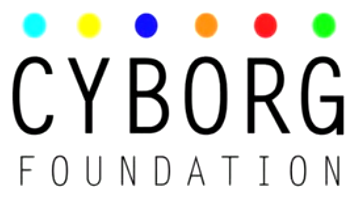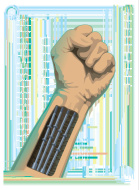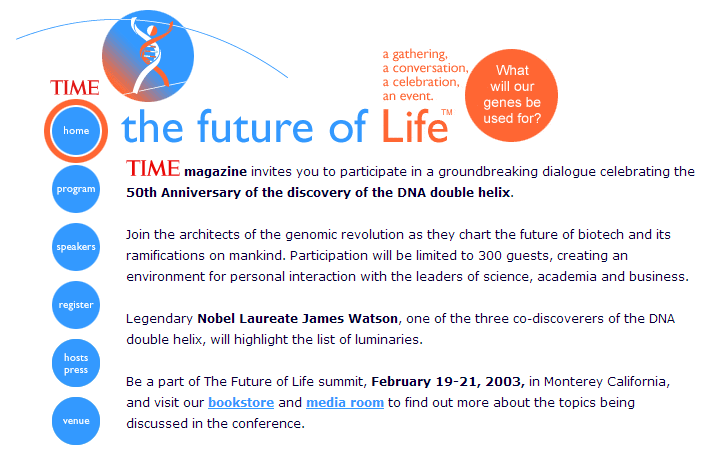letters from Ray | There are already many cyborgs among us
June 1, 2014
Dear readers,
Check out this article on NBC News. I discussed this topic at Time’s 2003 The Future of Life Summit, during the session “The next frontier.” My full dialog is below. My point was “there are already many cyborgs among us.”
— Ray Kurzweil
NBC | “Cyborgs among us: human biohackers embed chips in their bodies”
related viewing from NBC:
 NBC | From the Tin Man to the Teen Titans, a history of cyborgs.
NBC | From the Tin Man to the Teen Titans, a history of cyborgs.
related viewing from GE:
 GE | The Cyborg Foundation is the Grand Jury Prize Winner in the $200,000 GE Focus Forward Filmmaker Competition. Neil Harbisson was born with achromatopsia, a rare condition that causes complete color blindness. In 2004, Harbisson and Adam Montandon developed the eyeborg, a device that translates colours into sounds. Harbisson has been claimed to be the first recognized cyborg in the world, as his passport photo now includes his device.
GE | The Cyborg Foundation is the Grand Jury Prize Winner in the $200,000 GE Focus Forward Filmmaker Competition. Neil Harbisson was born with achromatopsia, a rare condition that causes complete color blindness. In 2004, Harbisson and Adam Montandon developed the eyeborg, a device that translates colours into sounds. Harbisson has been claimed to be the first recognized cyborg in the world, as his passport photo now includes his device.
In 2010, Neil Harbisson and Moon Ribas created the Cyborg Foundation, an international organization to help humans become cyborgs. The foundation has also experimented with other sensory devices, including an “earborg,” which translates sound into color, and a “speedborg,” which allows people to detect movement through electronic earrings that vibrate.
 related reading:
related reading:
Cyborg Foundation | main
Cyborg Foundation | YouTube channel
Cyborg Project | main
related reading:
Time | The Future of Life Summit
EurekAlert | “Time magazine Future of Life Summit”
A tour with Ray | “Time’s 2003 event The Future of Life Summit”
by Ray Kurzweil
During the session “The next frontier,” I had the opportunity to present my ideas on the merger of our biological species with our own technology. I pointed out that there are already many cyborgs among us.
The FDA recently approved a computerized neural implant for Parkinson’s Disease that replaces the biological neurons destroyed by that disease. This surgically implanted device communicates with its neighboring biological neurons in the same way that the original biological neurons do in the patient’s “ventral posterior nucleus.”
As another example, there are already four major conferences on BioMEMS (Biological Micro Electronic Mechanical Systems) covering contemporary efforts to place tiny diagnostic and therapeutic machines in the human body and blood system. One scientist has already cured type I diabetes in rats with a nanoengineered device that releases insulin and blocks antibodies. A similar approach should work in humans.
With continuing advances in miniaturization and the ongoing acceleration of the power of computation and communication technologies, during the 2020s we will be able to develop nanobots — tiny yet intelligent devices the size of human blood cells. They will be able to navigate through the bloodstream, combat pathogens, and reverse human disease and aging processes.
Most significantly, these nanobots will be able to directly interface non-invasively with our biological neurons to greatly expand human experience and intelligence. By interfacing directly with our sensory system from inside the nervous system, nanobots will be able to provide full-immersion virtual reality. By creating virtual interneuronal connections, nanobots can literally expand the 100 trillion limit on our interneuronal connections, which is where human thinking takes place.

